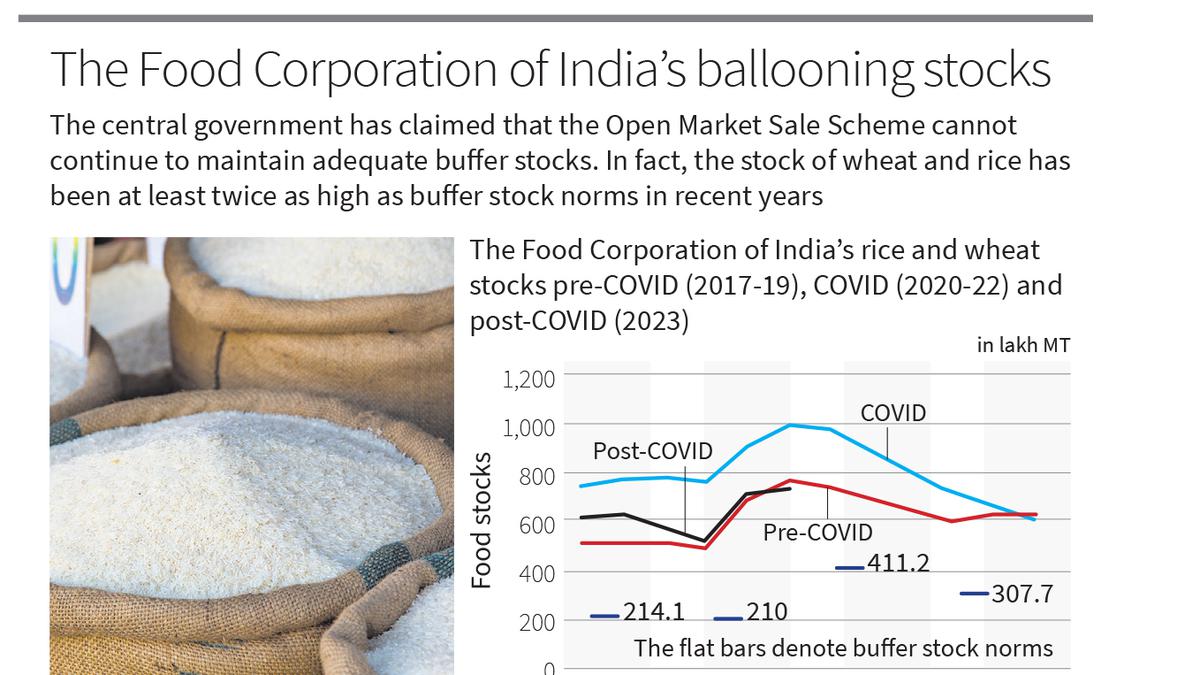
The ‘Anna Bhagya’ fiasco and thinking beyond rice Premium
The Hindu
While the Congress party’s ‘Anna Bhagya’ promise betrayed a lack of vision for food security, it is also time to think beyond rice and wheat through the PDS
The ‘Anna Bhagya’ scheme is one of the five main election promises made by the Congress party in the run-up to the Karnataka Assembly elections, in May 2023, with the pledge to provide an additional five kilograms of free rice to every member of a Below Poverty Line household. The Congress party’s (lack of) vision is as disappointing as the central government’s policy.
Even the fiercest critics of the PDS were compelled to recognise its key role in protecting people from hunger during the COVID-19 -related lockdowns. Many believe that the coverage of 80 crore people (during the pandemic) is not only laudable (it is) but also adequate (it is not). Besides inadequate coverage, in most States, the PDS does not provide nutritious food items such as pulses and oil. These are the two lacunae that should be rectified.
In late March 2020, the central government announced that it would double rations for those who have ration cards. For the situation then, this was a good move. But even then it did nothing for those who did not have ration cards — and there were plenty of them.
The National Food Security Act (NFSA) 2013 expanded the coverage of the PDS substantially. So, why are so many people still without ration cards? The law mandates that 50% of the urban and 75% of the rural populations must be covered by the PDS. The central government combined these coverage ratios (adjusted to account for State-wise poverty levels) with the 2011 population numbers to determine each State’s ‘quota’ of ration cards. As the NFSA rolled out (staggered across States between 2013-2017), PDS coverage climbed from under 500 million to reach 800 million — its current level.
The problem is that even in 2023, India continues to use the 2011 Census population because the central government is blissfully evading its obligation to conduct the 2021 Census. The NFSA requires that the latest completed Census be used to calculate the total PDS coverage. The government, thus, has a convenient excuse to ignore demands to expand PDS coverage to account for population growth. At the all-India level, the under-coverage results in the exclusion of an estimated 113 million people, of whom 1.1 million are in Karnataka.
Some States use their own budgets to “top up” PDS coverage through the Open Market Sale Scheme (OMSS) — for example, Tamil Nadu — or local procurement — for example, Odisha and Chhattisgarh. Curiously, no State government – not even those led by non-Bharatiya Janata Party parties — appears to have taken up the issue of under-coverage due to outdated population estimates with the central government.
The Food Corporation of India (FCI) procures grain for three broad purposes. One, it supports producers by procuring (mainly) wheat and rice at minimum support prices (MSP). Two, the central government uses this to meet the needs of the PDS (providing five kilograms a person every month free to NFSA households), a consumer subsidy. Three, the stocks are used for price stabilisation through the OMSS.











